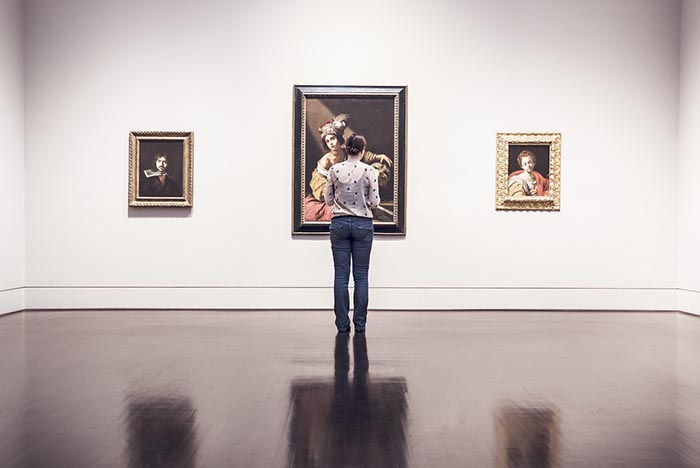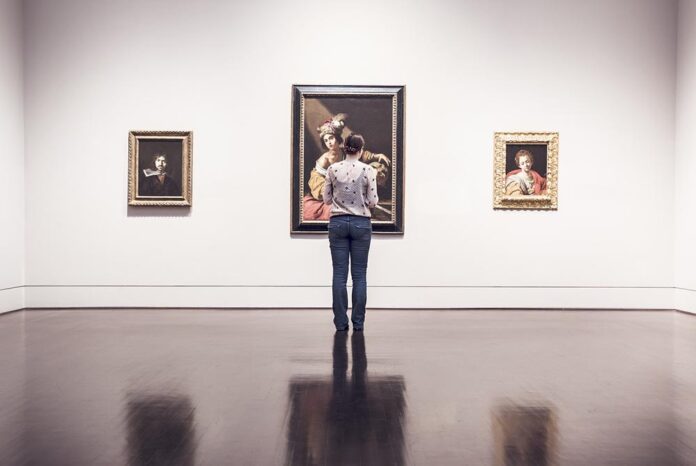An original work of art can be a fabulous aesthetic addition to any home. Buying an authentic work of art can also be a good investment.
However, before you purchase, it is crucial that you first determine whether the work is genuine or fake. But how exactly do you go about spotting an original from a knockoff? Thankfully, there are multiple proven methods that can be employed to determine the authenticity of a painting or other type of artwork, such as the following.
Examine the Artist’s Signature
When it comes to spotting original paintings and drawings from fake ones, examining the artist’s signature is a good place to begin.
Most artists sign their works. By comparing the signature on a painting or drawing you are considering purchasing with the signature on the artist’s other works, you could spot whether the work is genuine or not.
The signature should look the same. Also, often, artists place their signatures in the same places, such as the left or right-hand bottom corners of paintings.
It could be worthwhile getting the opinion of a signature expert to confirm that the artwork is the real McCoy.

Look for Discrepancies
You should also examine the artwork itself for any discrepancies. For example, when examining a painting, you should carefully scrutinize the brush strokes and colors to ensure they are consistent with the artist’s other works.
Noticing discrepancies in sculptures can sometimes be a little trickier to identify, but again, spend time comparing the artwork with others by the artist to determine whether the work you are looking at is authentic.
Scrutinize the Back of a Painting
When trying to distinguish genuine paintings from fake ones, you need to look at the back of the canvas as much as the front.
Original paintings often have marks like stamps and labels on the back. If there are no markings at all, it is more likely that the work is fake. However, you should not rely solely on this method to spot fake paintings.
Check the Canvas and Frame of a Painting
It is just as important to examine the canvas and frame of a painting, especially for older works of art. If the wood used for the canvas looks newer than it should or if there are irregularities like poor stitching of the canvas, you could be looking at a fake.
You should spend time researching what an original canvas and frame should look like for the period of the painting to better determine whether a painting is genuine or not.
Conduct Research
It is not only signatures, frames, and canvases that you should research. You should also spend time finding out as much as possible about the artist and his or her artworks.
By learning about an artist’s style, technique, and history, it will be easier to spot any inconsistencies in an artwork that indicate it is a potential fake.
Only Buy from Reputable Sellers to Ensure an Artwork is Genuine
You can save time on research and ensure you buy genuine artwork if you purchase the work from a reputable auction house or gallery.
Both reputable online and offline galleries will use experts to authenticate the works of art they sell. And reputable galleries that feature works by modern artists, such as the selection of original art for sale at Singulart, take pride in selling authentic works and they will have systems in place to ensure they only sell original works of art.
Find Out if the Artwork You Want to Buy Comes with an Authenticity Certificate
When buying works of art from famous artists, make sure the artwork you purchase comes with a certificate of authenticity. The signed document will prove that the artwork is genuine.
Use Scientific Approaches with the Help of Experts
If you have used methods like those above to determine whether an artwork is genuine or fake and are still unsure about the work’s authenticity, it is time to contact an expert. There are various scientific approaches that can be employed to find out whether works of art are original.
For example, to determine the authenticity of paintings, chemical analysis or X-ray fluorescence can be used to analyze things like the pigments and binders that are used in the artwork. They can then be compared with known samples from the artist.
Experts can also use infrared imaging to detect irregularities and repairs of paintings that are not visible to the naked eye.
Summing Up
You now know of various ways to ensure the artwork you purchase is genuine and not fake. At the end of the day, the key is to not rush into the purchasing process. You should spend time utilizing the above methods of spotting a fake to ensure you buy bona fide work.
So, to recap, you can:
- Look for Discrepancies.
- Scrutinize the Back of a Painting.
- Check the Canvas and Frame of a Painting.
- Conduct Research.
- Only Buy from Reputable Sellers.
- Find Out if the Artwork You Want to Buy Comes with an Authenticity Certificate.
- Use Scientific Approaches with the Help of Experts.
##



